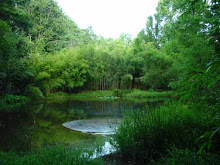The Bathynomi are solitary creatures, mostly living alone except for mating periods. I wonder if the fathers ever wish they, too, could hold eggs in brood pouches. Or do they leave after sex, without a second thought or look at their once-mate? Do the mothers transfer some sort of Bathynomus identity onto the children? Do they show their great history, long evolutionary journey and amazing efficiency as marine creatures? Do they pass along tips for surviving? Not just physically, but emotionally? How to survive as an asocial deep marine animal. How to live without friends or family, how to enjoy life without any hope of connection with another Bathynomous, or even Isopod in general. Their sex lives are uneventful and almost completely unknown. Perhaps they have special dances or courtship rituals, strange movements from ancestors that create, however briefly, a beautiful culture of Bathynomi in which pod and pod are one. Do they glide through currents, touching one another' s exoskeletons with feelers? rubbing leg with leg?
Do they resent the Mitrella amphisella for feeding off them? Do they attempt inter-species outreach with the eels and lobsters that share their diet? These are many questions that I wonder, and which I challenge other scientists to answer as we continue to explore deep sea life. Together, we can make the voyage underwater, back in time, to discover the life of the Bathynomus Giganteus.




No comments:
Post a Comment